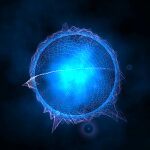Link to Pubmed [PMID] – 27497052
Link to DOI – S1369-5274(16)30104-710.1016/j.mib.2016.07.016
Curr Opin Microbiol 2016 12; 34(): 24-30
The pathogenic amoeba Entamoeba histolytica is able to migrate within various compartments of the human body. The present article reviews progress in understanding the mechanisms of cell motility in E. histolytica during human intestinal invasion and, in particular, how the three-dimensional characteristics of the environment regulate the parasite’s behaviour. The amoeboid mode of migration that applies to E. histolytica’s displacements on two-dimensional surfaces is also expected to apply to the three-dimensional environment in the human intestine although several unknown, distinct modalities may be involved. Recent advances in the field of tissue engineering have provided clues on how the construction of a human colon model could help us to understand the host’s intestinal physiology and its changes following amoebic infection.


